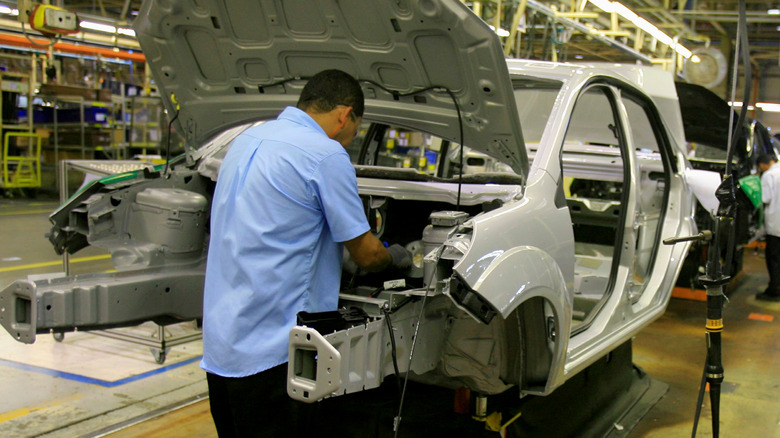
Henry Ford did not find the concept of the assembly path, but he used it to improve the efficiency of novice companies and make motorized vehicles more affordable. Since Ford first increased production in its Detroit factory in 1913, the United States has become a den of vehicle manufacturing. Now, more than a century later, Ford plans the fall of the dealer as we know and demands professional wrestlers.
Ford did not take this action because everything went well in the automotive world. Like many producers, he struggled to get cars and trucks from the production line and to the sales floor. Since 2019, a series of global crises has a big effect on individuals, businesses and governments throughout the world. The automotive industry has not been immune to the effects of this challenge and has seen a drastic decline in production several times over the past few years.
So how bad is the suffering of the industry? Are we more than the worst? And when will the automotive industry return to normal? To answer these questions, Slashgear has dismantled several in-depth production figures provided by Dataherald. So let’s pay attention to what happened between August 2018 and now.
Pandemi Coronavirus stops vehicle production
Apart from the peak and the occasional trough, vehicle production in the United States has generally floated above the 200,000 sign per month over the past few years. The most productive month during the period of time measured occurred in October 2018, when nearly 273,000 cars were produced. As you can see from the statistics we quoted, annual car production seems to peak in October. This may be because new models are usually released towards the end of the year (through US news) and producers increase production for stock dealers and meet pre-order demand. In addition to some important declines in July and December, production remains consistent throughout 2019.
Then Pandemic Coronavirus occurs. Vehicle production is basically stopped in April 2020 as a step to help fight Covid-19 implemented in the United States. GM and Ford producers also shift manufacturing resources to ventilator production, in an effort to save as many lives as possible. Less than 2,000 vehicles were produced that month throughout the country. However, things immediately reappear. In May, only under 50,000 vehicles were rolled out from the production line, and in June, the number of production was only slightly reported in March. Production increased again in July, and in October the number was around 200,000 approximately as pre-pandemic.
Production drops again, but for different reasons
After booming October, we witnessed a sharp decline in other production. The reason this time is not a global pandemic but a lack of semiconductor throughout the world. While in essence the car is a mechanical object, modern vehicles are very dependent on electronic. Everything starts from the engine adjustment, to the comfort feature, to the car window the car requires a little processing power. Lack of computer chips touch the modern automotive industry for each bit as hard as steel shortages. Vehicle manufacturing is not the only industry that depends on the semiconductor. Every electronic device uses it, so car makers have a lot of competition when trying to secure supply paths. The shortage causes the situation where one producer has 95,000 vehicles that have not been completed and cannot be accommodated.
The level of production seems to find the bottom in September 2021, and everything continues to increase over the past 10 months. While the average production is still down by around 6 million vehicles per year, production over the past year is the most stable since 2019 – and all of them are still trending up. The request of a new car is definitely there, and no doubt will cause a surge in supply immediately after making slopes again. Customers are very desperate for vehicles that some people pay above MSRP 2022 for the 2021 model used (via money.com). In total, the deficiency may cost the US car industry more than $ 200 billion – and until it is handled, that number will continue to grow.






